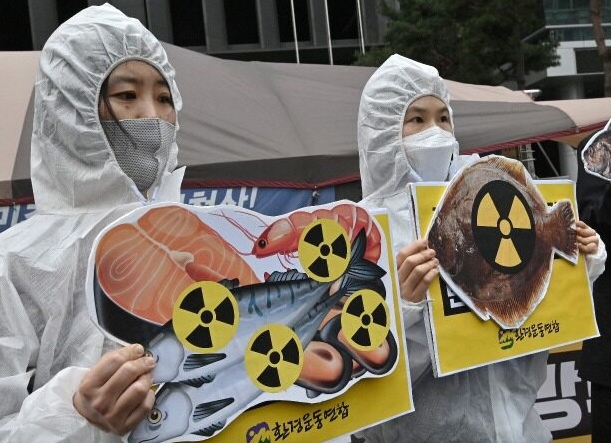After the devastating consequences of the tsunami at the Fukushima Daiichi nuclear power plant in Japan, the country began discharging treated wastewater. In this regard, the population of the region expressed extreme dissatisfaction despite statements by scientists about the harmlessness of this to the environment, according to Voice Of America.
The water being released into the Pacific has been largely decontaminated of most dangerous elements. However, it contains small amounts of tritium, a radioactive isotope of hydrogen that cannot be extracted through any existing treatment method.
The process of draining the water began in August and will continue for decades. This is necessary in connection with work to reduce treated water on the power plant site. That water is currently kept in more than 800 tanks. Japanese officials say that it is necessary to drain and remove some of the tanks so that facilities necessary for the decommissioning of the plant can be built.
Japanese officials have gone to great lengths to demonstrate their confidence in the safety of the water surrounding Fukushima. Prime Minister Fumio Kishida appeared on television eating sashimi prepared from fish caught in the area after the water releases began.
Japan is doing everything it can to demonstrate the safety of the waters surrounding Fukushima. Prime Minister Fumio Kishida ate sashimi made from fish caught in the area after the water release began, live in front of cameras. Despite such displays, as well as assessments from experts, including the International Atomic Energy Agency, that the release of water will not cause harm to the environment, protests have arisen.
Massive demonstrations began to take place against the release in Japan and Korea. The Chinese government accused Japan of behaving irresponsibly and imposing a ban on the importation of Japanese seafood.
In 2011, a huge wave hit the Japanese coast, destroying the Fukushima power plant, killing more than 20,000 people and flooding cities. The power plant’s cooling systems were disabled, leading to irreversible consequences. The Japanese government had to evacuate tens of thousands of residents from the region and has been working ever since to mitigate the damage and prevent further contamination.
Seawater was used to cool the station’s fuel rods. As a result, the water becomes contaminated with radioactive elements. The water is held in place and treated using what is called an advanced liquid treatment system (ALPS), which removes almost all contaminants except tritium.
Nuclear experts measure the amount of tritium present in a substance using units called becquerels. According to the World Health Organization, water containing up to 10,000 becquerels of tritium per liter is considered safe to drink. The treated water discharged from the Fukushima plant is being diluted to the point that it contains approximately 190 becquerels of tritium per liter.
Japan is not the only country to release water containing tritium into oceans and rivers. Many nations that rely on nuclear power for some of their energy supply similarly release treated wastewater.
Despite its criticism of Japan’s actions at Fukushima, at least four Chinese nuclear power plants also release water containing tritium into the ocean, all of them at significantly greater concentrations than in Fukushima.
Over the length of the plan, Japan expects 22 trillion becquerels of tritium per year to be released. According to data released by the Japanese government, China’s Qinshan Phase III Nuclear Power Plant in Zhejiang province released 143 trillion becquerels of tritium in 2020. Other countries with nuclear power plants that release tritium include South Korea, France, Russia, Canada, the United Kingdom and the United States.
There is no clear evidence that tritium-containing water has caused environmental damage or posed a danger to humans or wildlife in the areas where it has been released, in some cases for decades.
The Chinese government has taken a very public stand against the Fukushima water releases, despite engaging in the same practice itself.
Shihoko Goto, acting director of the Asia program at the Wilson Center, a Washington-based think tank, told VOA that China’s decision to focus so intently on the Fukushima water release is meant to demonstrate the significant ‘economic leverage’ it has over Japan. She claimed:
“It makes clear that Japan and the Japanese economy … [are] incredibly dependent on China.That’s been standard practice in China in the past. When things are going well, they don’t necessarily see the need to lash out,’ she said. ‘But given the current circumstances, it’s certainly a way for China to distract from the real issues.”
